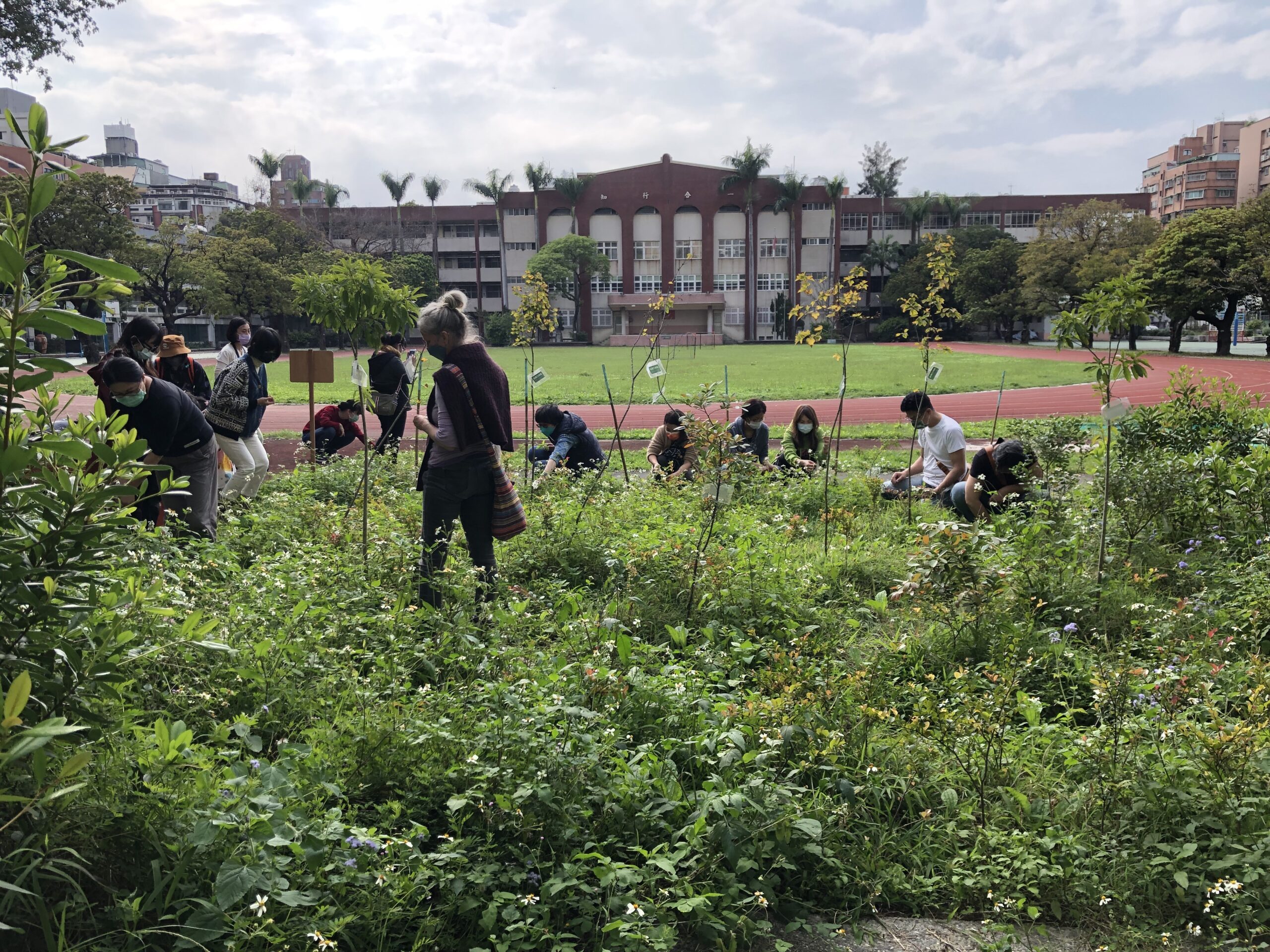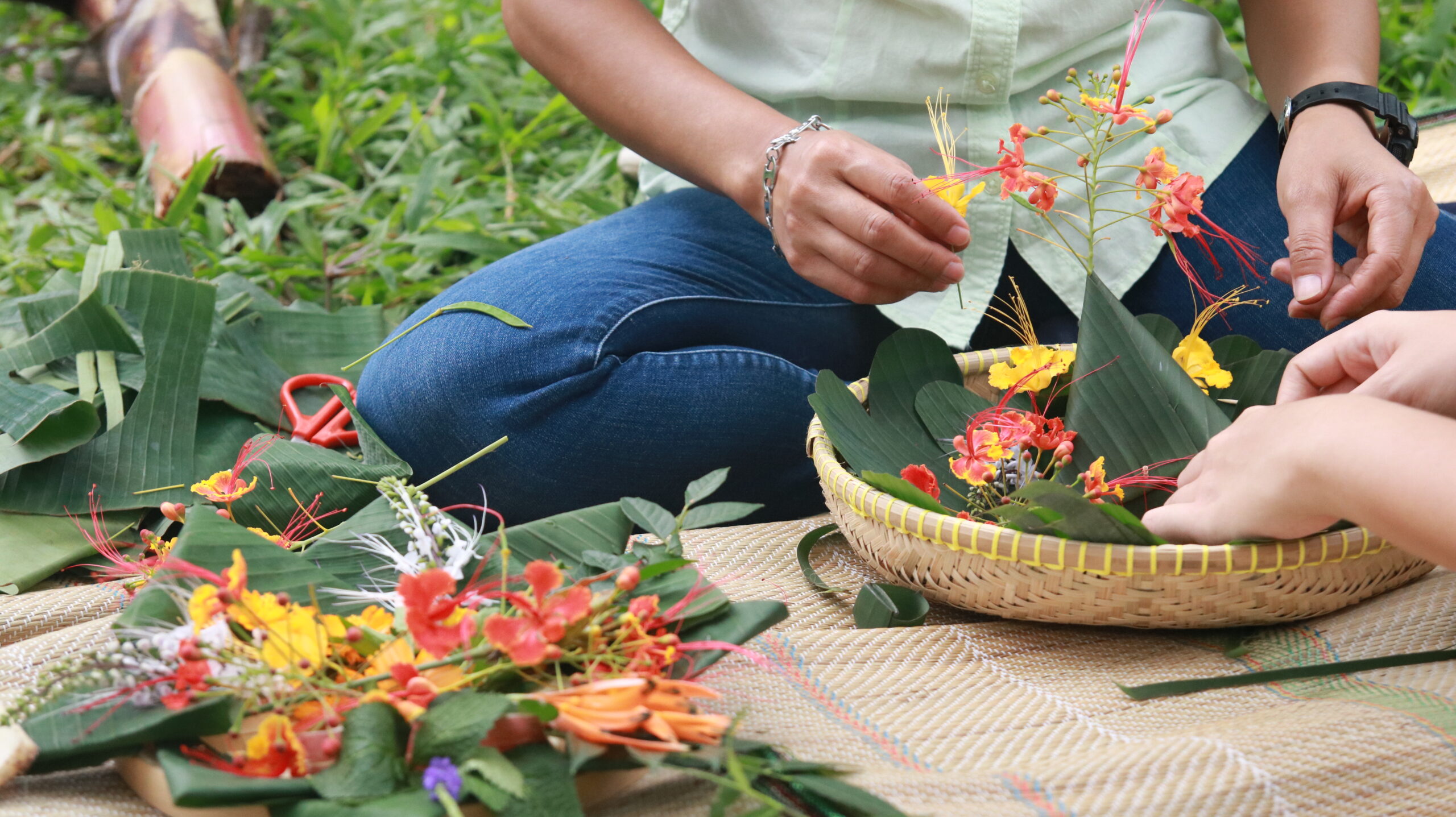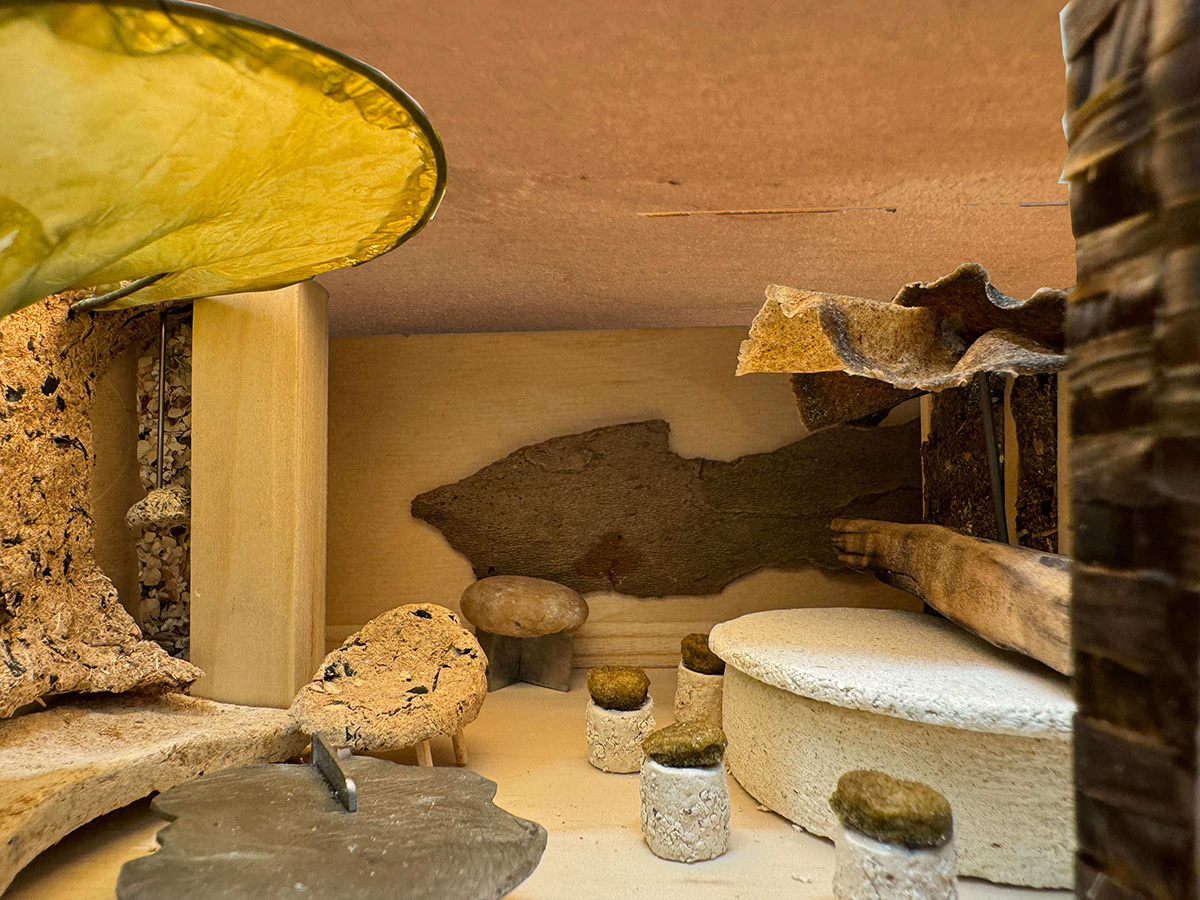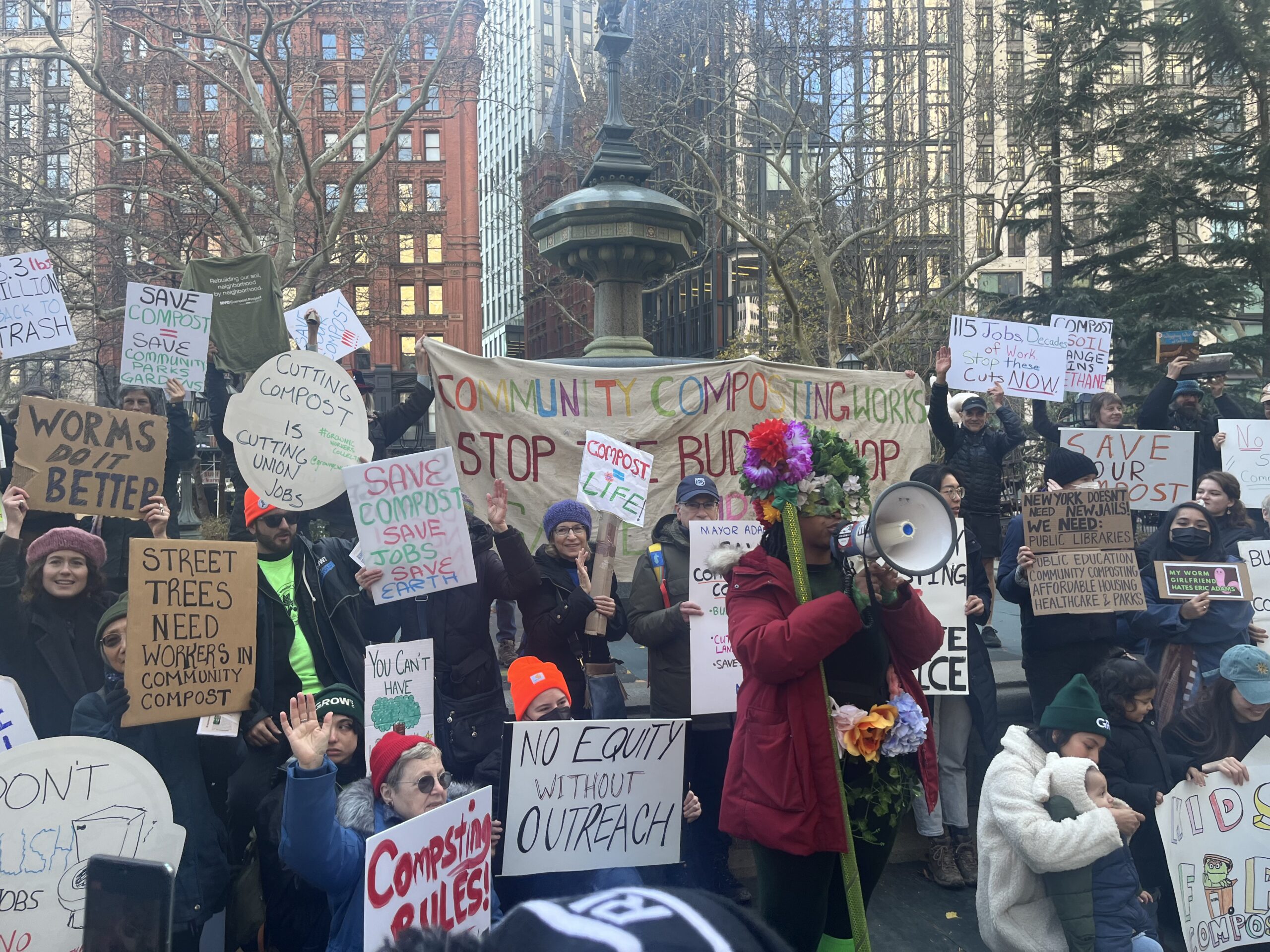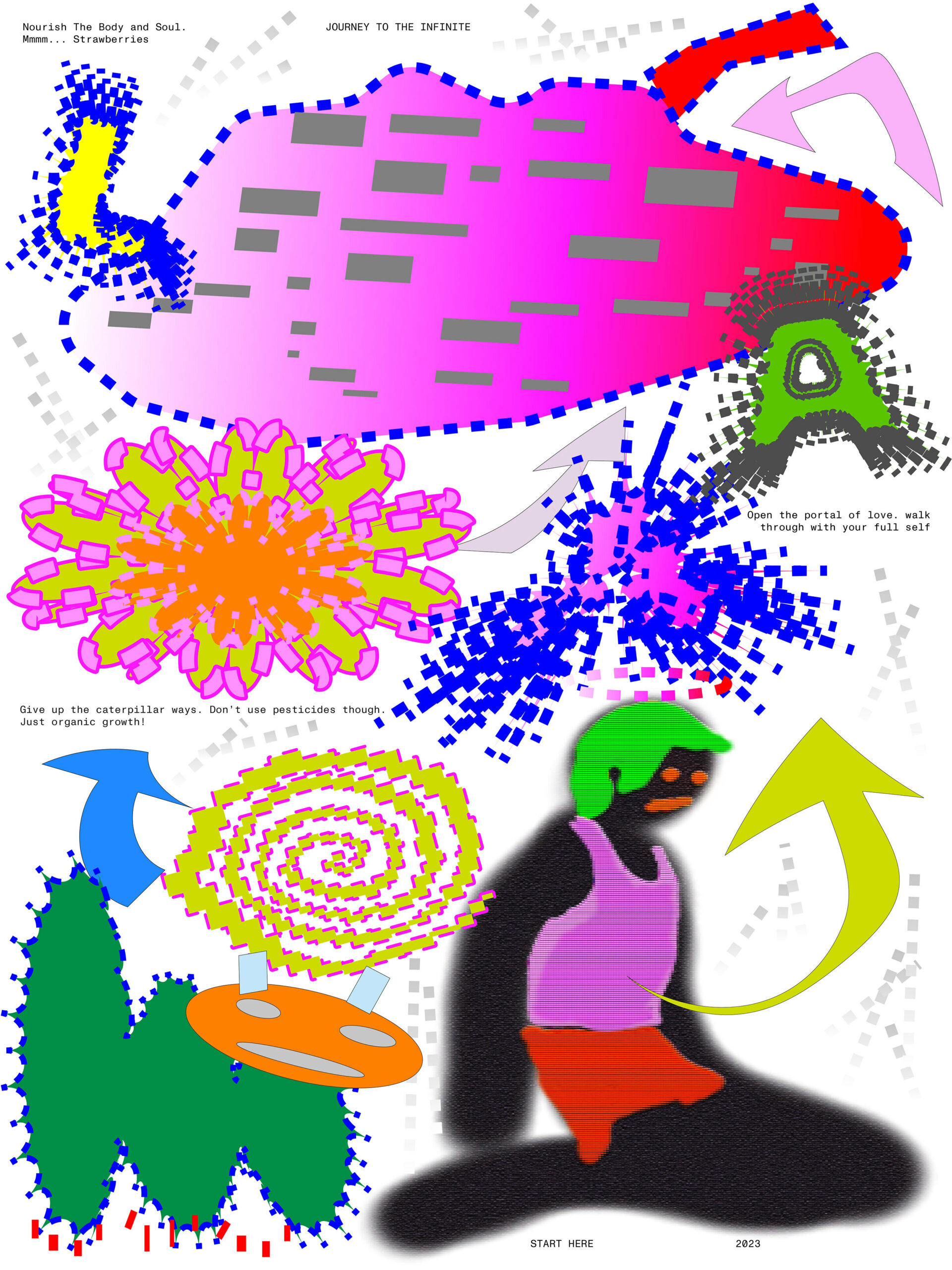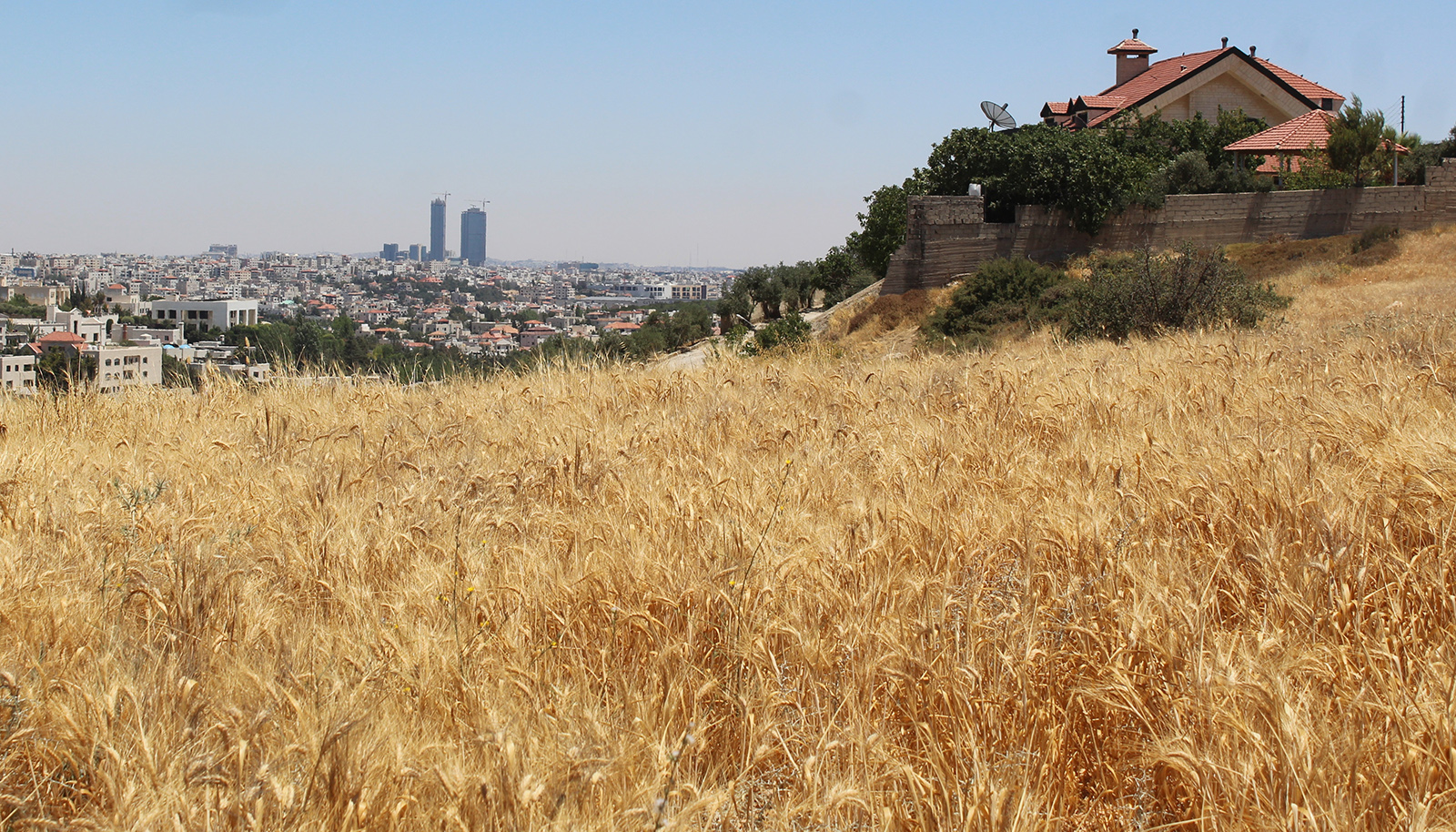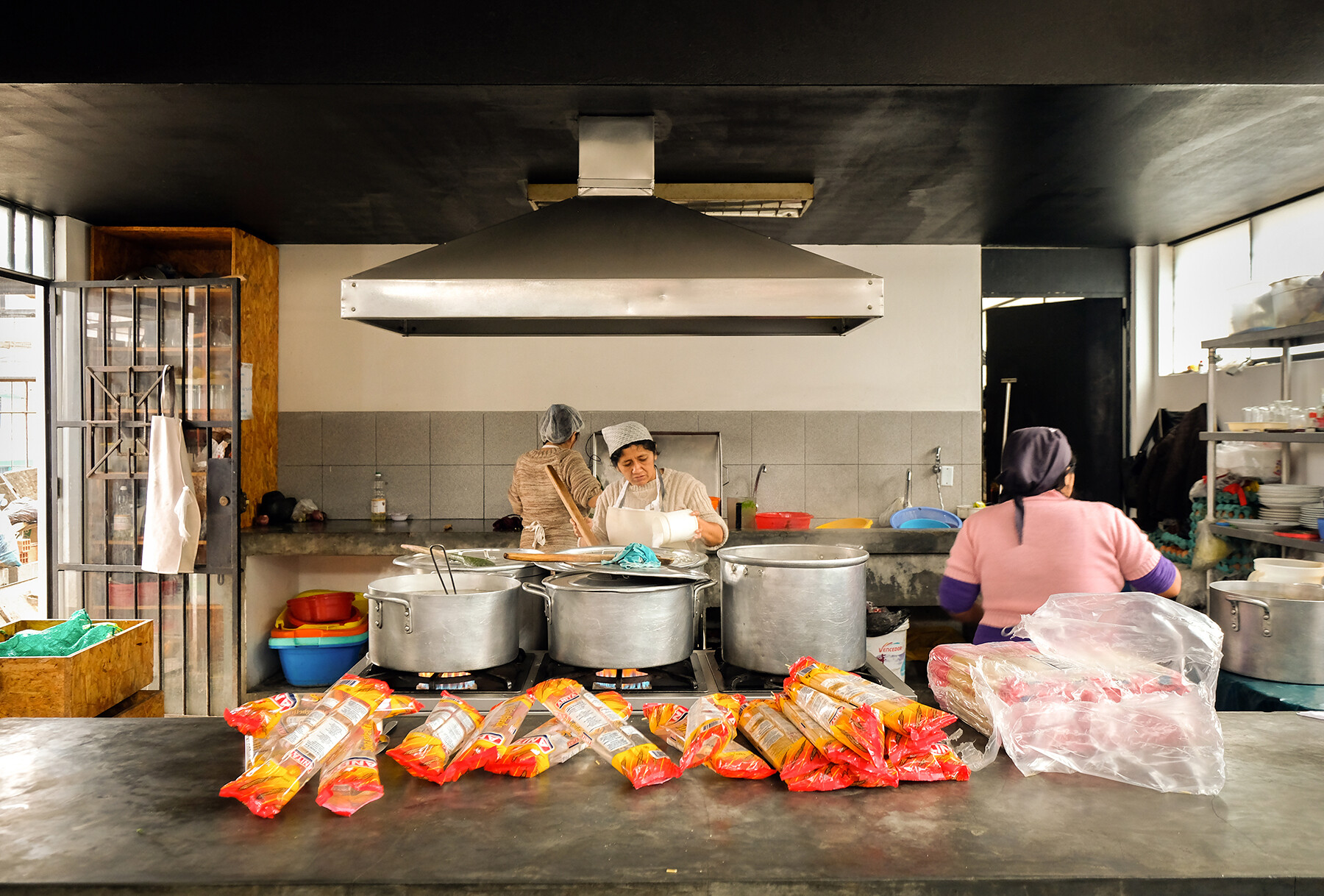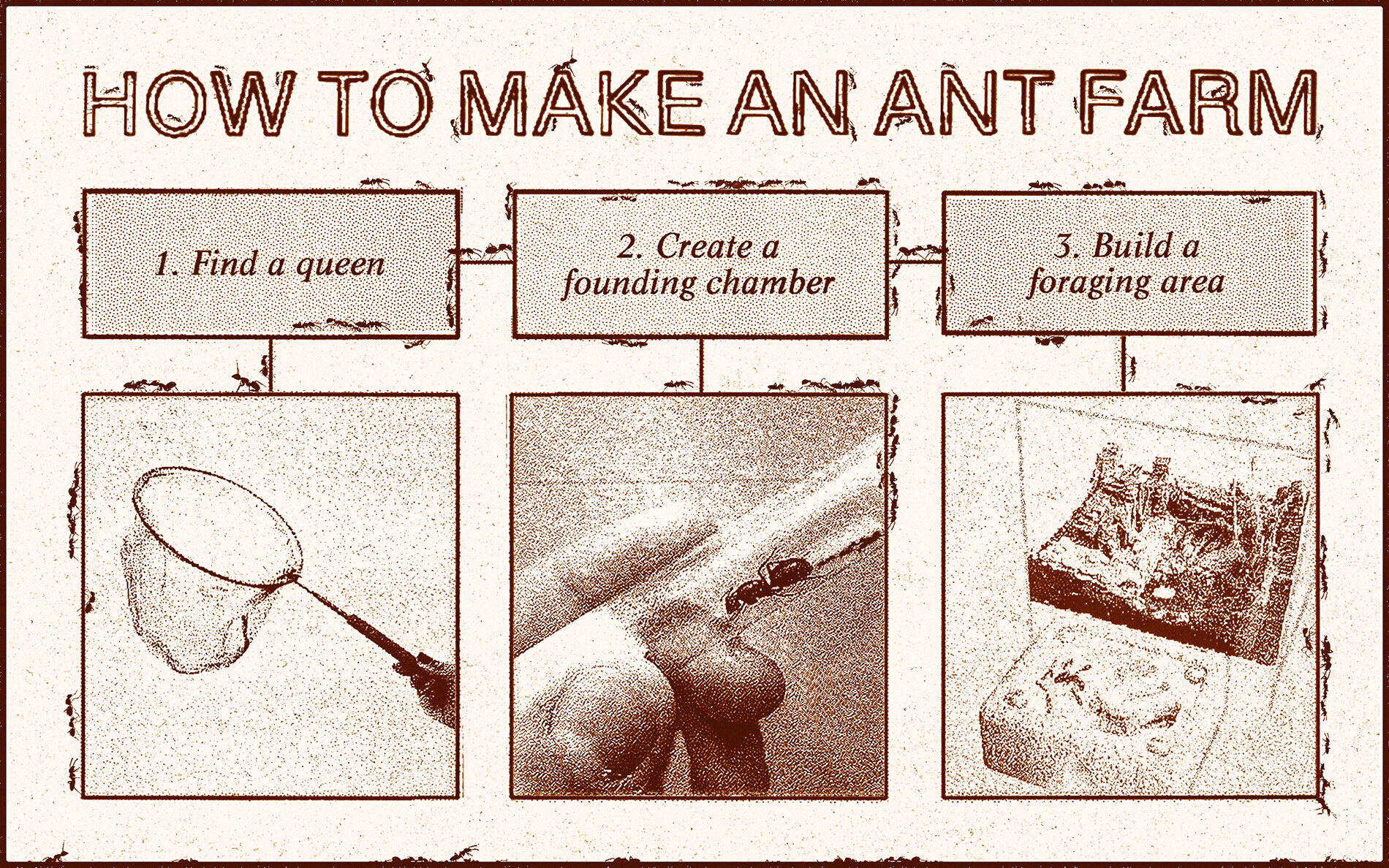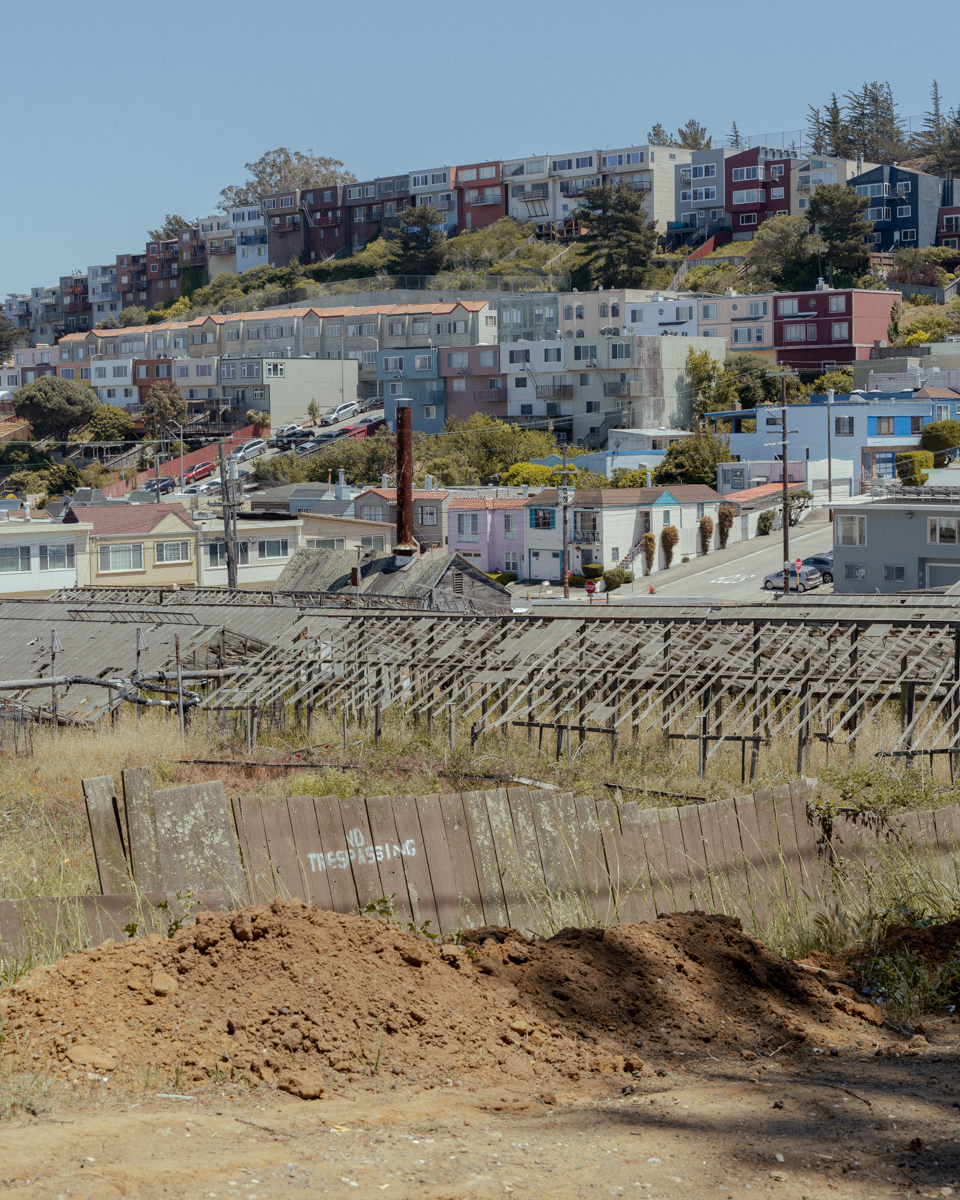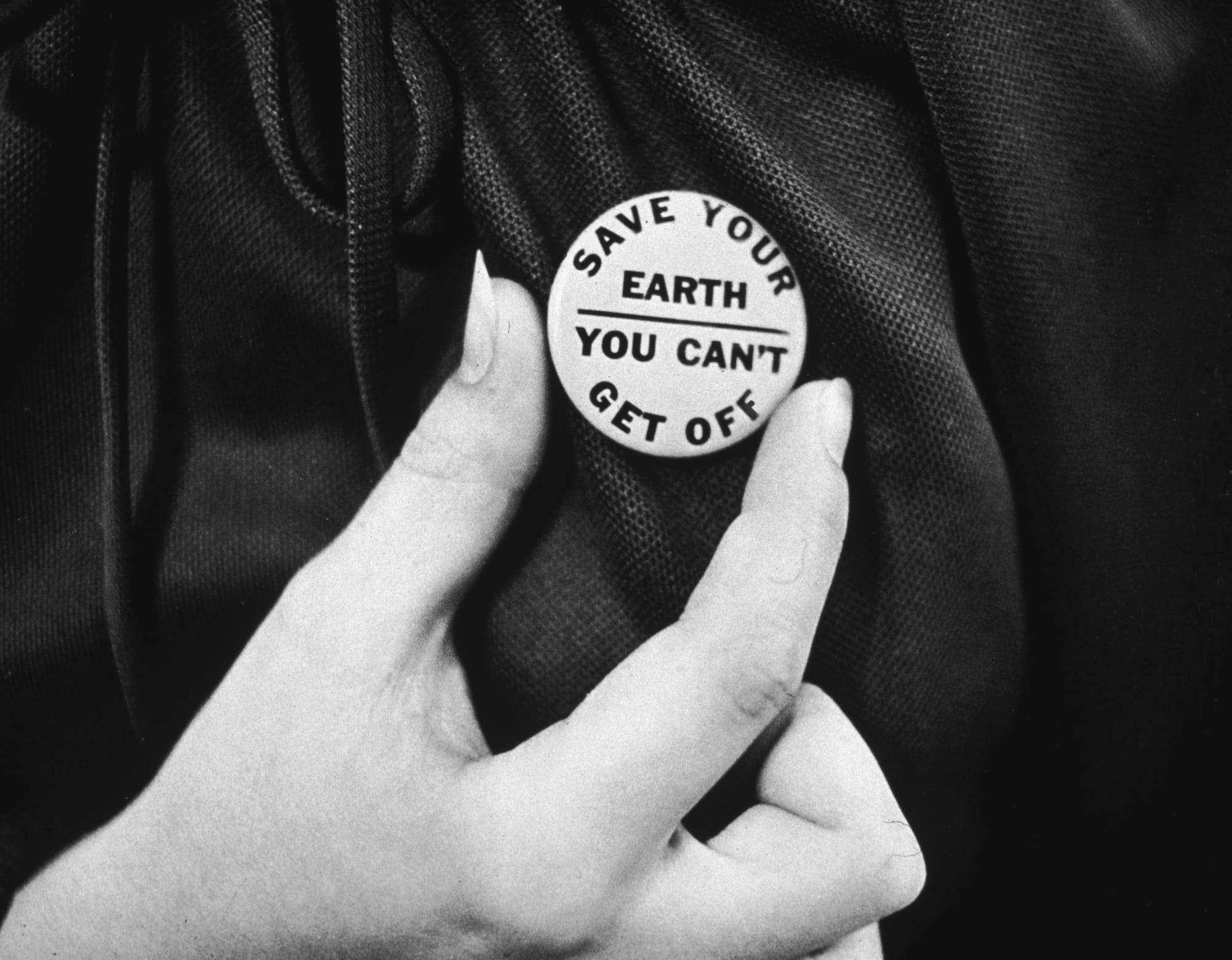While the islands of Taiwan only account for 0.02% of the global land mass, it boasts a rich biodiversity with 3.8% of the world’s species. The region’s environmental vantage has also enabled the development of a thriving tea industry which contributes to international markets in addition to supplying domestic demand — over 70% of Taiwan-produced tea leaves were consumed domestically in 2015.1 The country’s tea farms predominately produce Oolong, a partially oxidized tea that ranks as some of the most expensive variety, accounting for almost 90% of all production — a commercialized cultivation with environmental implications. 2
- 1. Chiu, Yi-Wen. 2019. “Environmental Implications of Taiwanese Oolong Tea and the Opportunities of Impact Reduction” Sustainability 11, no. 21: 6042.
By contrast, 雜草稍慢Weed Day, Zo Lin and Tiffany Lay’s eco-conscious, herbal practice centers Taiwan’s biodiversity through foraged “weed tea” (雜草茶). Since 2016, the Taiwanese foraging artists have created unique, complex brews from the weeds they’ve procured all over Taiwan. Their tea shop, 雜草町 Grassland, was established in 2020 at Taipei’s historic district in Dadaocheng, an area known for its dry goods wholesalers and longstanding tea trade. Firmly rooting themselves within an older community, Lin and Lay are invested in sustainable practices and education through an alternative tea culture by utilizing the existing “unwanted” plant population. Their commitment to biodiversity conservation is seen in the ways that Grassland also functions as a gathering, knowledge-sharing space with a small library where workshops and seminars are held.
- 2. Ibid.

I met the duo during Taiwan’s local elections last November, when Grassland became a base for a district candidate’s campaign. It was a slightly frantic time, as their support for a younger, progressive candidate stirred controversy amongst their community. Despite this, they generously hosted every person and passer-by, inviting them in and offering their weed tea. Grounded by a holistic philosophy of foraging and a love for the land, Lin and Lay are ambitious in their mission as they continuously seek new and creative ways to share their practice. In the following conversation, we speak about both Weed Day and Grassland’s development, their approach to community engagement, and how they shape their work for a visual arts context.
Parts of the conversation has been translated from Mandarin, and the transcript has been condensed and edited for clarity.
Annette Liu:
Let’s begin with the establishment of Weed Day. Zo, this journey began for you after you quit your job in design. Tiffany, you were working in the arts and are trained in traditional Chinese tea ceremony. How did the two of you meet and become experienced herbalists? And what led you to establish Weed Day?
Zo Lin:
Yes, I was working at 104, [the Taiwanese job bank] as the head of visual design. I resigned in 2014 and started bicycling around Taiwan, taking on miscellaneous jobs in exchange for accommodation. One of the tasks I did was pull weeds for farms, where I started to realize these unwanted weeds were all common plants that people just weren’t familiar with, or didn’t recognize.
I met a local herbalist in Hengchun who I then apprenticed with to learn about these plants. The education included foraging, during which I was taught the process of making herbal tea. I remember being shocked by the extensive use of herbicides even in the mountain regions where we foraged—it was to an extent that harmed biodiversity. Weed Day developed out of a desire to “speak” for the land. I collected the names of all the plants I had foraged and began making the first series of our “Mandala” paper artworks (a series that Tiffany and I continue to do) where plant names from each region are calligraphed together in a distinct mandala design along with a unique herbal tea recipe. I had set up a studio space above an independent bookstore in Chiayi around 2016 to do this, and then did a residency in Kaohsiung, followed by another in Taipei in 2018—that’s when I met Tiffany.
Tiffany Lay:
Zo and I met when I was working at the Taipei Contemporary Culture Lab (C-Lab). She was part of a group show there and I was actually assigned to help her forage and assist with the production of her work, “Sleep 79.” At the time I was already interested in her practice as an artist, and we bonded a lot throughout the project. I wanted to continue collaborating with her, and with my experience of producing for other artists, I felt like there was a lot more Zo could do, given the opportunities.
I officially “joined” Zo in 2019, when we applied for a C-Lab residency together as Weed Day. We then participated in the Flaneur Festival in Berlin, and the success of that encouraged us to continue working together to develop bigger and better projects with a wider reach that combined my expertise and knowledge in making traditional tea and Zo’s expertise in making herbal tea.
I went back to community college to learn from a fourth-generation Taipei herbalist and learnt how to recognize and use Taiwanese plants in herbal tea. During this time, Zo and I had more conversations around the importance of sustaining biodiversity for a healthy ecosystem and started thinking about ways to incorporate this knowledge into an expanded artistic practice. We wanted to look beyond making tea, so we began working with—and learning from—other university professors who researched edible plants and plant dyes to think about ways that people could incorporate weeds into their life. The goal for all this was so we could reach more people, with a focus on the average person—not just the upper middle-class who have the luxury and time to go into the wild and forage—for them to value these plants around us and see them as being useful.


AL:
How has the brick-and-mortar of Grassland furthered this ongoing initiative of Weed
Day?
TL:
We founded Grassland in 2020, after doing a couple of other residencies in different locations. We always felt sad leaving those spaces we temporarily occupied, having to move out of them and depart from a community we were just beginning to know. So, we wanted to establish a permanent space of our own where we could be really grounded, and a part of, a local community.
ZL:
The whole idea of Grassland is to foster a community around the shop. We’re invested in engaging with marginalized communities too.. For example, we work with the visually impaired, and employ blind baristas every Sunday.
TL:
Setting up this [brick and mortar] “base” for Weed Day also allows people to find us, so we can hold ourselves responsible and accountable for the projects we do. Students who have taken our workshops can always come back to ask questions.
AL:
Having held regular workshops and collaborated with various organizations all over the country for the past few years, do you see a growing trend in foraging and biodiversity promotion in Taiwan? And if so, how have your public programs changed?
TL:
I don’t think there’s a foraging trend per se because people seem to be apprehensive about gathering wild foods, but there is a trend in learning about the plants around you and that’s what we lean into, we want people to recognize and understand their surrounding biodiversity.
ZL:
Foraging can only come after one has built that knowledge, and this is something we continue to focus on building through a workshop series we’re expanding this year. We’ll be “adopting” more public green spaces around Taipei where we let the weeds grow out by not spraying any herbicides, then we invite the local community out to observe, forage, and use these plants with us. This is a program we’ve been doing for years at different places, and we bear the responsibility of taking care of these lands by sharing our expertise. The community volunteers of Datong district’s elementary school (nearby Grassland) have become experts in caring for their parks in this sustainable way.
AL:
You’re co-organizing an upcoming 14-day Ziran Permaculture class with Tammy Turner, a Taiwan-based American permaculture designer and educator, focusing on sustainable practices and “self-sufficient food production.” Will the course interact with existing Taiwanese Indigenous ways of knowing?
TL:
Not specifically, but we consider Indigenous knowledge when we talk about self-sufficient food production. This is an important topic for us as we believe that food shortage will remain a problem in our lifetime, especially with the way we’re neglecting the planet, so the workshop aims to bring people “back” to their environment and learn about integrated farming systems. Within our practice, we do incorporate Indigenous knowledge along with other cultural traditions and crafts that we learnt from different communities, like Hakka-style weaving and Japanese papermaking, but the specific interaction depends on the plants we’re interacting with.
ZL:
Our approach of “contemporary foraging” (當代採集) focuses on sustaining biodiversity by adopting the most suitable method to collect from and care for the land. Our workshops also highlight the incredible role that weeds play in our ecosystem as pioneer species. We want to contribute to this understanding, so that more of us learn to take care of our environment and feel grounded in our surroundings.
TL:
We’re leading a weed revolution!

AL:
This reminds me of the first time I visited Grassland, when your shop became a base for the district candidate. I was surprised by your commitment to local politics. Why was it important for you two to provide space for, and publicly support a progressive candidate?
TL:
Yes, unfortunately that candidate didn’t win, but he did well for his first time running. I feel like it’s important to support your local politicians because they’re the ones who can implement policies that can push for cleaner environments and support sustainable ways of living. We aligned ourselves with that candidate to amplify his progressive agenda and to highlight the ecological issues we’re already passionate about. It’s hard for us to push our initiatives forward without the support of our local politicians because they have the resources.
AL:
Grassland operates as a tea shop with unique blends of “weed tea” made in-house from the weeds you’ve procured all over Taiwan. I love the blackboard above your shop counter mapping out all the places you’ve foraged together. Are there specific sites you revisit? And what is your approach to developing the tea blends? Do you seek to recreate the “taste” of a specific place?
ZL:
No, there aren’t sites we revisit specifically just to forage for our tea. We try to stay true to the changing ecosystem of the land, so the foraging process is unique each time and centers around sustaining biodiversity. For example, we’d collect the invasive species first, or larger amounts of the plants that have overgrown. Each blend therefore directly responds and reflects their environment. We haven’t got a strict formula because the whole process and experience can feel immeasurable at times, so we stick to our holistic philosophy and approach foraging with humility and gratitude. This is something we hope to share through our tea as well. That being said, we still aim to develop distinct flavors that are good and consistent in quality.

AL:
As foraging artists, you’ve participated in several major exhibitions and created site-specific work showcasing your extensive knowledge. How do you shape your practice within a visual arts context?
TL:
We try to create immersive installations that engage with multiple senses, like designing half-enclosed spaces with olfactory or audio components from the field. But our main mission with our exhibitions is to engage with a larger audience, including those beyond the museums. So public programs are an integral component for our installations as we want people to participate in creating our works with us.
ZL:
The programs are also community-based in this way and allows us more opportunities to shift the limiting narrative around weeds as “unwanted plants.” The artworks we make aim to offer other perspectives and hopefully inspire different, and more thoughtful ways of engaging with our environment.


AL:
What’s next for Weed Day and Grassland?
TL:
We want to focus on making new artworks this year, so we’ve downsized Grassland’s teashop operation to concentrate on our ongoing collaborations with different foundations. Some of the research projects we’ll be continuing include recipe development to cook invasive plants.
ZL:
A major exhibition we’re excited to be a part of is the “Romantic Route 3 Art Festival” (浪漫台三線藝術季) in Miaoli, where we’ll have a site-specific installation and lead workshops with the local Hakka community. We’ll also be developing the “Mandala” series to exhibit in Chiayi City’s Arboretum—the largest arboretum in Taiwan! The project is a symbolic return to where it all began, both personally for me, and for Weed Day.


